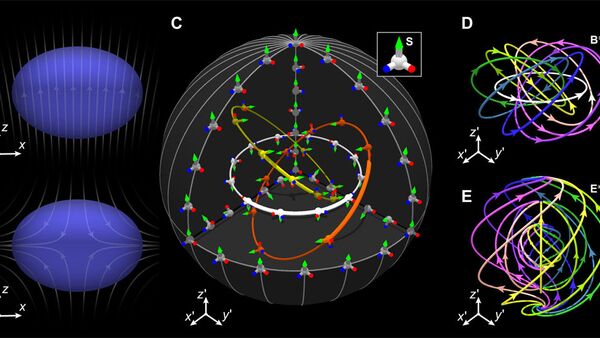Physicists from Finland's Aalto University and Amherst College in Massachusetts have created and photographed a Shankar skyrmion, a never-before-synthesized quantum phenomenon with properties believed to be similar to ball lightning.
"It is remarkable that we could create the synthetic electromagnetic knot, that is, quantum ball lightning, essentially with just two counter-circulating electric currents. Thus, it may be possible that a natural ball lightning could arise in a normal lightning strike," study coauthor Dr. Mikko Mottonen said.
We made a synthetic electromagnetic #knot in a three-dimensional #skyrmion @AmherstCollege @AaltoUniversity #quantum It has features of a model for #balllightning https://t.co/Q587sxEtFG pic.twitter.com/WiCpE521l3
— Mikko Möttönen (@mpmotton) 2 марта 2018 г.
Ball lightning, which consists of red-hot plasma charged with electricity, periodically appears in the Earth's atmosphere during thunderstorms, and has a longer 'lifespan' than ordinary lightning. How it arises is something that has been the subject of debate among scientists for nearly a century and a half.
Now, Mottonen and his colleagues believe they have recreated the natural phenomenon in a lab environment by creating a three-dimensional skyrmion, a tangled, closed, synthetic magnetic field formed in a Bose-Einstein condensate first theorized over 40 years ago, but never observed experimentally until now.
"The quantum gas is cooled down to a very low temperature where it forms a Bose-Einstein condensate: all atoms in the gas end up in the state of minimum energy. The state does not behave like an ordinary gas anymore but like a single giant atom," study coauthor and Amherst College professor Dr. David Hall explained.
The scientists' findings, published in the Science Advances academic journal, may help explain the ball lightning phenomenon. Furthermore, according to Mottonen, further studies into creating real ball lightening using their method may assist other scientists in "finding a solution to keep plasma together efficiently and enable more stable fusion reactors than we have now."

